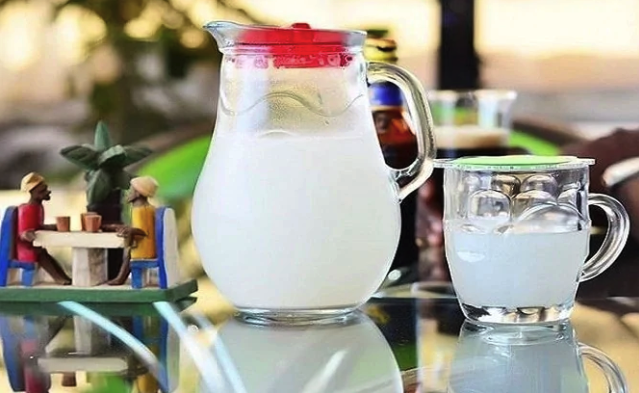
Palm wine is also called “Mmanya”, “Emu”, “Bammi”, “Mmin-efik”, and Mmin-ukot”, “Matango,” “Fitchuk”, “Nsafufuo”, “Doka”, “Tuba”, “Toddy”, “Lambong” in various tribes and countries. Palm wine can be gotten from the Raphia palm trees or oil palm trees Elaeis guineensis.
This beverage is often consumed at social events and in homes as a traditional drink. Palm wine is helpful in infertility treatment. It is also widely used for industrial purposes, for example, as yeast for baking, and alcohol for the portable ethanol production. The yeast contained in the palm wine is claimed to promote lactation and improve eyesight.
You might be wondering about the taste of the palm wine. There actually exist a lot of kinds of palm trees, but wine made of the sap (natural juice) tastes almost the same, like a mixture of pineapple and lemon.
The studies show that fermented palm wine increases reproductive parameters in male albino rats. However, this information is considered insufficient.

1 THE HEALTH BENEFITS OF PALM WINE
The controversy lies in the dual structure of palm wine. On the one hand, this beverage has a biological positive impact on health containing many nutritious ingredients and mineral elements such as carbohydrate, crude protein, lipid, crude fiber, ash, calories, moisture, Vitamins A and C, iron (Fe 2+), copper (Cu 2+), magnesium (Mg 2+), calcium (Ca 2+), and zinc (Zn 2+). On the other hand, palm wine is still an alcoholic drink (2%–8%), and many biological disorders may be caused by endocrine disrupting chemicals included alcohol.
While the benefits of alcohol-containing products are still being debated, some useful functions have been noticed to make changes in cells of the liver, kidney brain, and even reproductive structures.





Discussion about this post